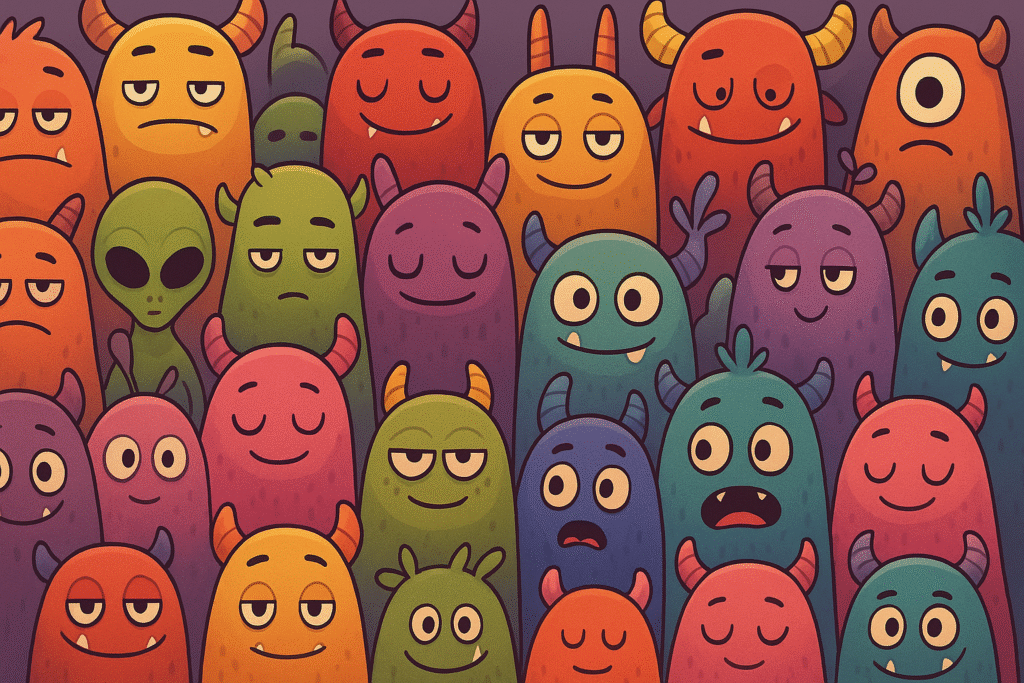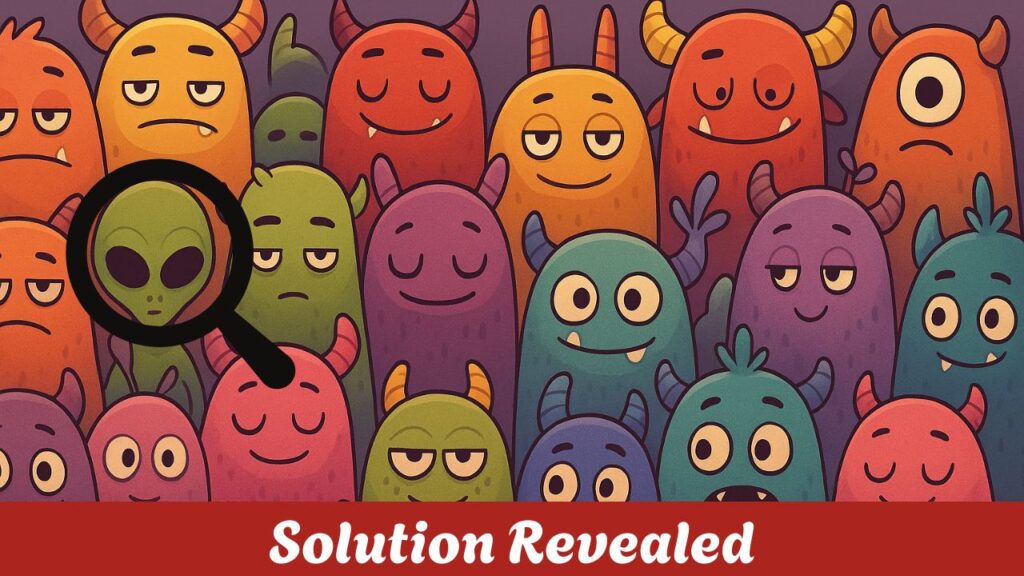When it comes to optical illusions and visual challenges, few things are more satisfying than outsmarting a puzzle that stumps nearly everyone.
These illusions aren’t just fun—they’re brilliant tools for testing your perception, focus, and mental sharpness. Today, we bring you a brain-twisting test: can you find the hidden alien among a crowd of nearly identical creatures?
Most people fail. In fact, 98% of viewers can’t spot it in time. Think you’re one of the rare 2%?
The Visual Puzzle That’s Bending Minds
This mind-bending visual puzzle features a crowded scene of whimsical cartoon monsters. All of them share similar colors, shapes, and facial expressions—except one. Hidden among them is an alien that doesn’t quite belong.
The challenge: spot the hidden alien in just 7 seconds. If you can do it, you might have sharper-than-average observation skills.

Why This Illusion Is So Tricky
This illusion is a brain test wrapped in fun. Our brains are wired to recognize patterns quickly. When scanning a visually repetitive image, we tend to generalize what we see, assuming everything is the same—even if it’s not.
In this case, the alien is cleverly disguised to resemble the surrounding monsters in size, color, and shape, but with slight differences in facial features, eyes, or limb structure. Your brain has to work extra hard to filter out the “familiar” and find the anomaly.
What Makes 98% Miss the Alien?
Let’s look at the factors that contribute to this puzzle’s high failure rate:
| Visual Element | Why It Makes the Puzzle Hard |
|---|---|
| Color Similarity | Alien shares almost the same color palette as the monsters |
| Shape Mimicry | The alien’s body and limbs are nearly identical to others |
| Pattern Overload | Repetition causes the brain to gloss over differences |
| Time Constraint (7 seconds) | Forces the brain to rely on shortcuts rather than detailed analysis |
| Peripheral Blur | Details at the edges of vision are harder to register under pressure |
This combination of factors forms a perfect storm for visual confusion, making it difficult even for the most observant viewers.
Tips to Spot the Alien Faster
Need an edge to beat the puzzle? Here are some expert tips to train your eyes:
- Don’t scan too quickly – take a deep breath and let your eyes flow naturally across the image.
- Focus on facial features – aliens often have exaggerated or non-human characteristics.
- Start from corners or edges – unusual elements are often placed away from the center.
- Watch for symmetry breaks – monsters are uniform, aliens often stand out subtly.

The Surprising Brain Benefits of Optical Illusions
You might think these puzzles are just a fun pastime, but they actually offer a workout for your brain. Regular exposure to visual puzzles like this can:
- Improve concentration and focus
- Enhance short-term memory
- Boost visual processing speed
- Sharpen pattern recognition skills
- Delay cognitive aging
Much like physical exercise strengthens the body, optical illusions challenge and improve your mind.
Why Aliens Make Great Illusion Subjects
Just like the popular hidden bat puzzles, aliens are perfect for visual misdirection. They can be drawn to resemble existing creatures (like monsters or humans) while still retaining unique features. Their undefined biology allows for just enough visual ambiguity to fool the eye.
This makes aliens excellent subjects for brain games—similar to how bats blend in with birds, yet stand out just enough to challenge the observer.
Conclusion: Are You Among the Elite 2%?
If you managed to spot the hidden alien within 7 seconds, congratulations! You’re in the top 2% with exceptional visual processing skills. If not, don’t worry—these puzzles are meant to train your brain, not frustrate you.
Keep trying visual challenges like this to improve your attention to detail, pattern recognition, and cognitive agility. The more you play, the sharper your mind becomes.
Ready for the next puzzle?
FAQs
1. Why couldn’t I find the alien even after multiple attempts?
Your brain adapts to patterns and can miss small deviations. These illusions train you to become more observant over time.
2. Are these puzzles helpful for kids?
Absolutely! They can enhance focus, visual memory, and attention span in a fun, engaging way.
3. Can I get better at solving optical illusions?
Yes! Like any skill, visual observation improves with consistent practice and strategy.

